Fender CEO Andy Mooney: “When that article came out with the headline ‘Guitar is dead’, that was the definition of fake news”
The head honcho on Fender's record-breaking year, how guitar players have changed since the company's inception, and the business lessons he learned from Steve Jobs
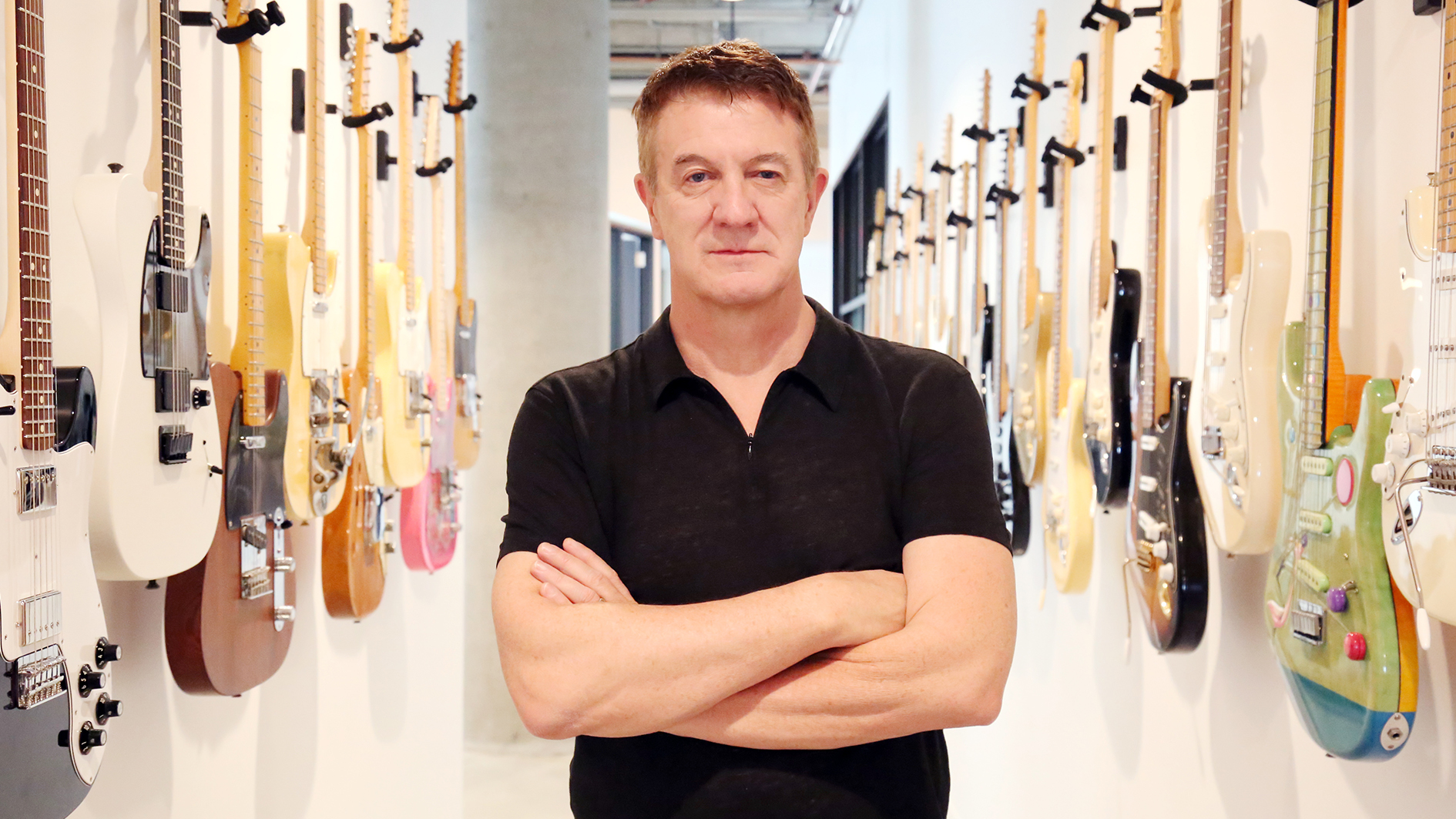
2020 has been something of a rollercoaster for the guitar industry – Fender included. Yet despite a global pandemic, and factory and retailer shutdowns, the iconic guitar builder has gone on to have the best year in its entire history.
Now, the company caps off that achievement with the launch of the American Professional II series this week. Considering just how popular the original models became – now accounting for over half of Fender’s instrument sales – the new updated range of 10 electric guitars and basses looks destined to follow suit.
Hand-made in the Corona factory, the new models feature a deep C neck with a sculpted heel for more accessibility to the upper frets, new V-Mod pickups with push-pull switching, rolled fingerboard edges and new hero colors including Miami Blue, Dark Knight, 3-Color Burst, Mercury and Mystic Surf Green.
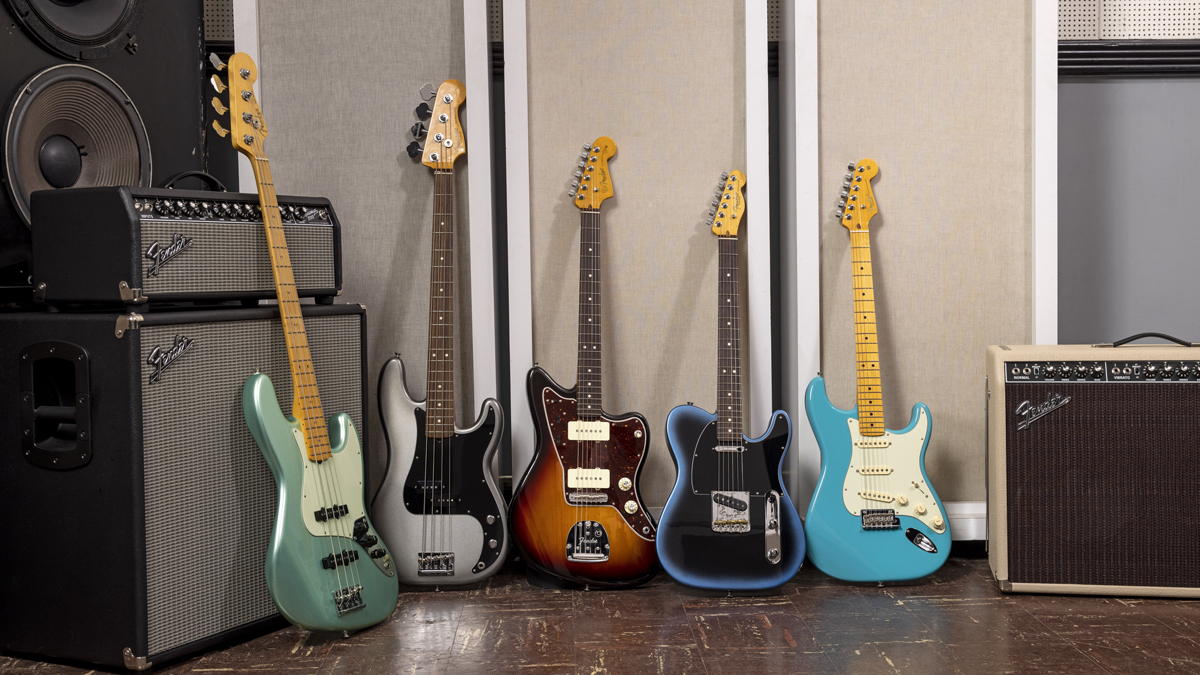
These new features are the result of several years of collaboration with Fender artists around the world, carefully researching how to better suit musicians’ needs on tone, playability and aesthetics – ultimately furthering a brand legacy famously built on game-changing innovation.
We hunted down Fender CEO Andy Mooney to get his insight into the new range and the changing face of guitar players, as well as Fender's plans for its 75th anniversary next year – and how Mooney plans to keep the entire guitar industry in rude health for the next 75 years and beyond.
Here’s what he had to say…
Hello, Andy! Congratulations on such a successful year… despite the odds!
Get The Pick Newsletter
All the latest guitar news, interviews, lessons, reviews, deals and more, direct to your inbox!
“Yeah! A lot of the headlines categorized what happened this year as a resurgence in the sales of electric guitars but the industry has been growing for a decade. We’ve been growing faster than the industry because we’ve been attempting to fuel growth with things like Fender Play and product innovation.
60% of artists opt to play the American Pro out of all the guitars in our line
“We’ve also been gaining market share. We were on track to have a record year right through until the middle of March and then when the lockdowns kicked in 90% of the dealers we did business with worldwide were closed. Both our factories were closed.
“If you had asked me if we were going to have a record year back then, the answer would have been, ‘Hell no!’ It’s now going to be the biggest year in the history of the company… we couldn’t be more thrilled.”
You’re revamping the American Professional series, with the new V-Mod II pickups and finishes…
“A lot of people look at the evolution of the Strat or the Tele and asked, ‘What’s changed?’ On the American Pro, nothing’s changed except for how it feels, sounds and plays.
“We have direct relationships with over 2,500 artists worldwide. About 60% of them opt to play the American Pro out of all the guitars in our line. It’s the most widely used electric guitar on stage around the world – geographically, by genre, by gender…
“That universe of artists is our focus group for what we have to do in terms of the evolution. It usually takes about three or four to go through an intense listening period to evolve a platform as important as that.
“There are new pickups, a new neck shape, more access to the upper register – incorporating some of the design features from the Ultra. It’s all the things the artists told us would be preferential for them.
“We’re built on the ethos of Leo Fender, who was not a guitar player but one of the greatest listeners in the world. We listen intently to the artists and incorporate their input into the evolution of the platform.”
Much like those first Fender guitars, the new Acoustasonics feel genuinely groundbreaking. Leo, wherever he is, would have been proud!
What surprised us is that there are so many electric musicians like Nile Rodgers or Kirk Hammett are using the Acoustasonic as a tool for song development
“That’s a classic case in point. The brief for the Acoustasonic was design an acoustic guitar for the working musician the way Leo would. Now on one hand, that’s the world’s simplest brief and on the other hand it was a very difficult project that took us nearly three years to execute.
“Form followed function in every aspect of Leo’s designs for the original Telecaster and Stratocaster. We looked at the acoustics being used by professional musicians and knew 90% of the time it would be electrified on stage with accessible controls and a neck that can be easily adjusted on the road.
“The end result was all based on function. We tried to make it flexible from a tone perspective – you wouldn’t have to lug around 10 acoustic guitars, you could just take one.
“Getting the electric sounds was a bonus, a very unexpected bonus that came in the product development cycle. What surprised us is that there are so many electric musicians like Nile Rodgers or Kirk Hammett who are using them as a creative tool for song development… they’re so flexible.”

There’s that 75th anniversary fast approaching. How will Fender be celebrating?
“We’ll be celebrating with anniversary guitars coming out of both the Corona and Ensenada factories. The first anniversary models, which I had in my collection before I joined the company, were things like the 25th. I have the 40th anniversary Strat which is very close to the Jeff Beck model, which I also own.
“The 75th Corona model is quite close to the American Pro II, it comes with badging as well as gold hardware and some interesting finishes…”
Which are your favorites?
“The Miami Blue Strat is killer! In some ways, it harkens back to Leo’s preference for automotive colors as a differentiating feature. I think that type of blue is a signature one for autos these days, the product development thought it might be interesting to try on a Strat… I think they were 100% right.”
How has Fender supported artists and venues throughout the pandemic?
“There’s a number of things we’ve done to try and support our artists during this. There’s the Artist Check-In which has included people like Johnny Marr, so whenever we work with them, we make a donation on their behalf to MusiCares.
I think it’ll happen maybe the end of next year, or more realistically, Q1 of the following year to see a healthy return to the live music scene
“We also worked with our friends in Live Nation to develop guitars with the Master Builders to help road crews during these tough times. In addition to fretted instruments, the other thing that’s really boomed over the year has been recording equipment. So the artists are very busy!
“What you will see sometime next year is a landslide of new content coming from all these artists who have been locked up at home. They’ve been asking for more equipment from us than ever before, so we’ve been trying to support them in small or multiple ways as best we can.
“One thing that’s been encouraging is how Live Nation said they expected a landslide of requests for refunds through Ticketmaster but 80% of the people with pre-paid tickets haven’t asked for a refund. They’re anxious for venues to reopen again.
“I think it’ll happen maybe the end of next year, or more realistically, Q1 of the following year to see a healthy return to the live music scene.”

The response to Fender Play promotions throughout the pandemic has been remarkable – did that take you by surprise?
“So it’s a subscription-based online learning tool. We see it as a growth initiative for the entire industry. I should step back a little… when I joined the company in 2015, I was anxious for data on who was buying guitars and why. There wasn’t a lot of data available.
“We conducted what could be the most comprehensive bit of research that had ever been done in the industry, starting in the US and then doing it in the UK a few years after. There were five key insights that came out of that.
“45% of all guitars sold were going to first-time players. That was much higher than we anticipated. Half of those first-time players were female, which was again higher than we anticipated.
We figured if we could bring new players into the industry and help reduce the abandonment rate, we could grow the size of the entire industry and hopefully grow at a faster pace within it
“A lot of players gravitate to an acoustic over electric because they think it will be easier to learn – I’ve never found that to be true – but that’s what happens. A lot of the female players were buying online because the physical retail store can be pretty intimidating for any first-time player, perhaps even more for women because there might not be many clerks in-store that they can relate to.
“An even bigger discovery was that 90% of first-time players abandon the instrument in the first year, if not the first 90 days. The remaining 10% are the ones who become folks like you or I, with a number of guitars and go crazy in their lifetime, investing thousands and thousands and driving the hardware side of the business.
“We figured if we could bring new players into the industry and help reduce the abandonment rate, we could grow the size of the entire industry and hopefully grow at a faster pace within it.”
Well, it definitely seems to be working...
“We entered Covid with 150,000 paying subscribers. When lockdown happened, purely as a gesture of goodwill, we offered Fender Play free for 90 days for the first 100,000 to sign up. Honestly, we were expecting less than half of that. And we got 100,000 in the first day.
“We expanded into half a million, which we did in the first week, and then get to a million. Those were predominantly brand-new players, who were younger on average than the original Fender Player users and more diverse, with a higher percentage of females. And they bought a lot of gear across the entire network. It turned out to be a really significant business initiative for us.
“As it was meant as a gesture of goodwill, we got a lot of positive vibes back from the industry. So much so, we just decided to do it again – offering it free for another 90 days during the continuing work from home phase and through the holiday and Christmas period.”
What do you feel is the state of guitar right now? There’s that never-ending debate about whether guitar music is dead or in rude health…
“When the Washington Post article came out a few years back with the headline ‘Guitar is dead’ – that in my mind was the very definition of fake news. We had supplied the journalist with the data to demonstrate we were going through a period of enduring positive growth in the industry.
It all changed for me in the '70s. If you could play three chords and have enough energy and a pulse, you could get into the music business
“Perhaps a lot of the people who contributed to that article, like [Nashville dealer] George Gruhn, maybe their business was in decline. But that’s because the profile of artists has changed and the places you buy a guitar have changed quite wildly.
“When I grew up, my heroes were Ritchie Blackmore, Jimmy Page, Jimi Hendrix. Those were my heroes. Unbelievable guitarists who were highly influential for the rise of the electric guitar. They were all virtuosos, almost impossible to replicate.
“I learned a lot about the way a guitar can be used from punk. It all changed for me in the '70s. If you could play three chords and have enough energy and a pulse, you could get into the music business.
“That’s when it changed from being solely a virtuoso instrument into something for textural backdrops and compositions. When people like Johnny Marr and The Edge emerged, you could see the way that they used the guitar was very different to the likes of Clapton, Hendrix or anybody else. That’s been an enduring trend from the '70s.
“The way I like to characterize a contemporary player is someone that trusts in a high quality guitar, a high quality amp and a pedalboard with up to 150 pedals on it!
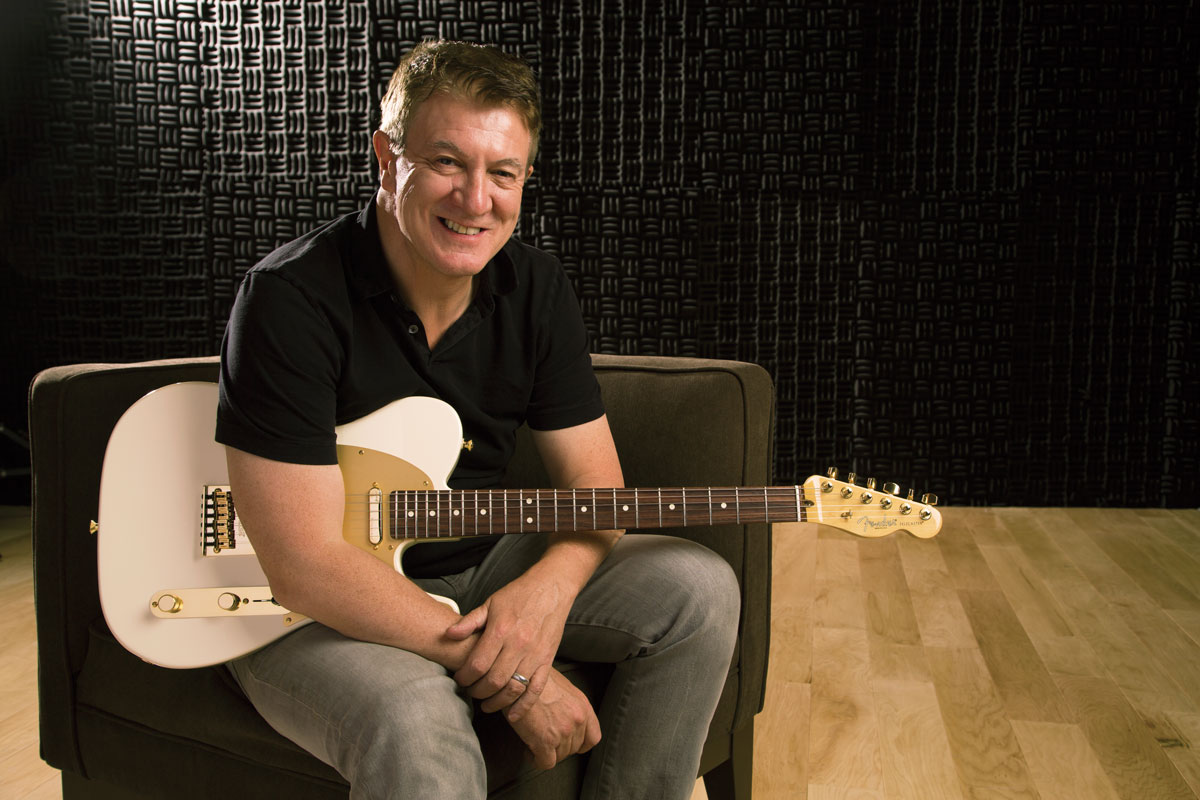
“So it comes down to how you play the instrument but also how you manipulate the sound and the signal chain – that’s today’s way of creating unique sounds on stage or in the studio. It’s not necessarily about mastering the diminished scale! It’s more about providing a texture backdrop for great songwriting.
“That’s a great thing because there are still many virtuoso players out there, a lot of them in heavy metal particularly. A lot of those players use Jacksons or Charvels, some still play Fenders too.
“But there’s this whole wider spectrum of players who are using guitars in ways we would never have thought of. I think that’s great. It opens up a bigger funnel for new people coming into the industry.”
Who is the one player you’d love to sign up for a signature model that isn’t on the Fender roster?
“I’m a heavy metal guy. My number one hero growing up was Blackmore. I just loved his blend of classical phrasing and training with the unbelievable rock sound and showmanship on stage.
Pedals are another area we’ve put a lot of energy into over the last few years. It’s an important part of the creative toolbox
“I guess a contemporary manifestation of that would be someone like Synyster Gates from Avenged Sevenfold. I love that band. The way he plays is incredible – he’s a master technician and lightning fast but also a great showman. There’s a laundry list of people I’d love to sign. He’s more in the vein of the kind of guitarists who influenced me when I was a kid...”
There’s an April Fools fake news story that comes out every year about Slash signing an exclusive deal with Fender… it still gets people every time!
“What’s interesting is that a lot of legendary players have used Strats in their own social activities. Like Kirk Hammett – he posted that he went out and bought an Acoustasonic Telecaster and Stratocaster. Some of the work Slash has done has been with a Stratocaster.
“Even the Edge, who we’ve done a signature guitar with, will have 23 different guitars over the course of one night. In his case, every song needed a very precise combination of one of his four amps and one of those 23 guitars! And the even settings for each song are very precise, which we know from Dallas [Schoo], his guitar tech.
“Then you’ve got a host of analog and digital pedals. The Edge is emblematic in some ways of how creative you can be by looking at all aspects of the signal chain. And, speaking of pedals, that’s another area we’ve put a lot of energy into over the last few years. It’s an important part of the creative toolbox.”
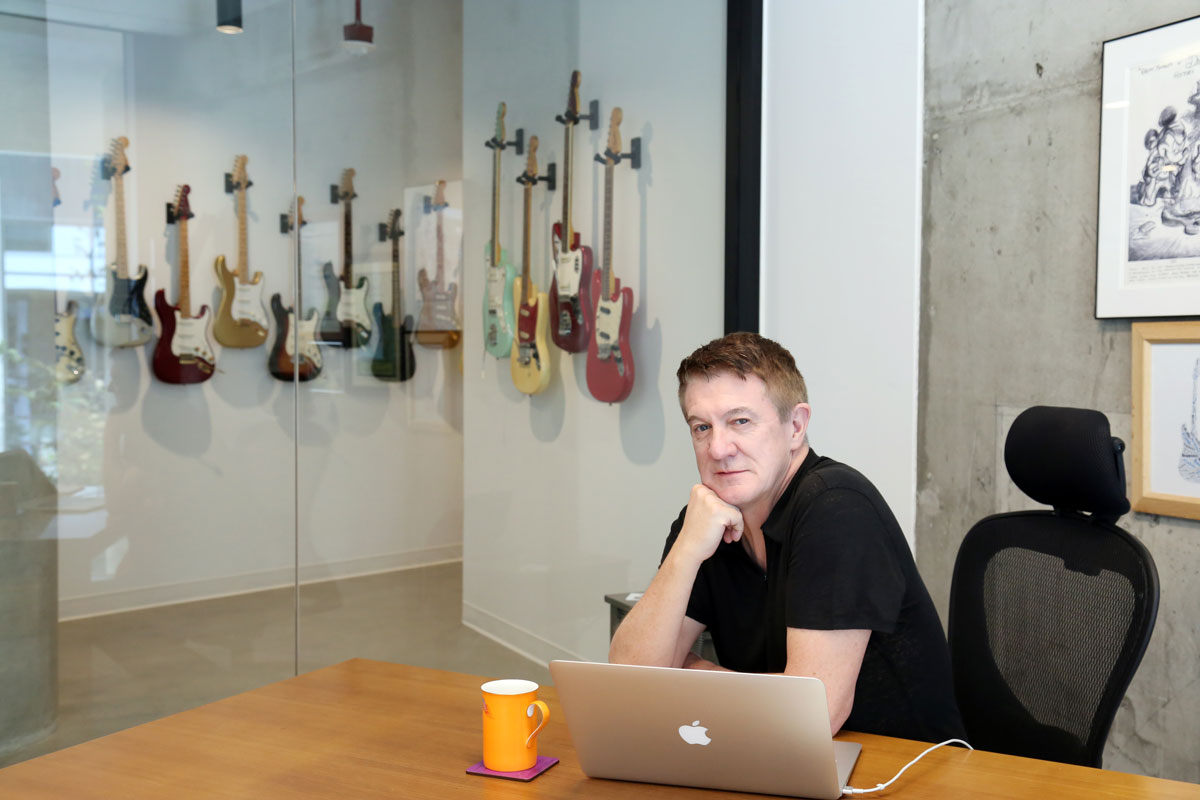
You grew up in Scotland and played in a rock and roll band. What was life like back then?
“I learned classical in grade school, which I think is a great instrument to learn on – the nylon reduces the pain threshold and is great transitioning to acoustic or electric. Then when I got into high school, I moved on to electric guitar.
“I never went to college because I had a desire to play professionally. I knew it was a risky proposition so played semi-pro all the way through my 20s, pretty much until I moved to the US.
“I sold my small collection of guitars before moving, which included a '60s Strat, a '60s SG, my four 4x12 Marshall stacks and two heads. I probably got about $1,000 for all of that.
I sold my small collection of guitars before moving, which included a '60s Strat, a '60s SG, my four 4x12 Marshall stacks and two heads. I probably got about $1,000 for all of that
“When you think about how much that small, tight collection would be worth now, it’s staggering. Through a mutual friend I developed a relationship with Alan Rogan who was the guitar tech for many greats, including Pete Townshend, Angus Young and anybody that was great.
“He visited me in Portland, Oregon when I was working for Nike and gave me a copy of the Bacon And Day History of Fender. I went through the book and fell in love with brand all over again. I whimsically decided I would collect every guitar in the book and I’ve been doing that since 1984.
“I had about 30 or 40 before I started at Fender. My holy grail from that book was the #0001 David Gilmour Strat. I tried to convince David for many years to at least give me access to it so we could do some Custom Shop replicas but he was never willing to do it.
“Now I know why, looking at how much that guitar went for. I bid on it actually! I played it at Christie’s when they put it on a roadshow along with his black Strat. So at least I got to touch it and play it… but sadly that one will never make it into the collection!”
You left the UK in the mid-'80s after giving up on the band to focus on your career, working at the highest level for giants like Nike, Disney and Quiksilver. How much of that corporate experience were you able to make applicable to the guitar market?
“When I left Nike after 20 years and moved to Disney, one of the first few people I met was Steve Jobs. He was the founder of Pixar at that time and Disney had a relationship with them from distributing their movies.
“Steve kinda grilled me the first time I met him. He asked me what I felt made great brands and I told him a great brand was the accumulative effect of great products. Luckily he said that he agreed, but with one caveat.
“He said every single product you work on is like a deposit or withdrawal from the brand equity. I kinda held that in the back of my mind. That feeling was reinforced even more while I was at Disney for those 11 years.
It’s always much better to be swimming with the tide than swimming against it. You want to be in a growth industry
“When I left Disney, I really wanted to become a CEO. I eventually became the CEO for Fender who had this 70-year ethos of product quality, most profoundly in the electric guitar and amp segment. I felt there was an opportunity to upgrade our offerings in the acoustic segment and the signal chain or pedal segment.
“I wanted every single product in the portfolio to be a deposit in the bank of brand equity and not a withdrawal. It’s always a work in progress. We’ve achieved a lot of what we set out to do in that regard, but there’s always more work to do on the product front because we’re a product-led company.
“It’s always much better to be swimming with the tide than swimming against it. You want to be in a growth industry. Nike was a growth industry for the 20 years I was there and still is. When I joined Disney, entertainment was a growth industry and it still is.
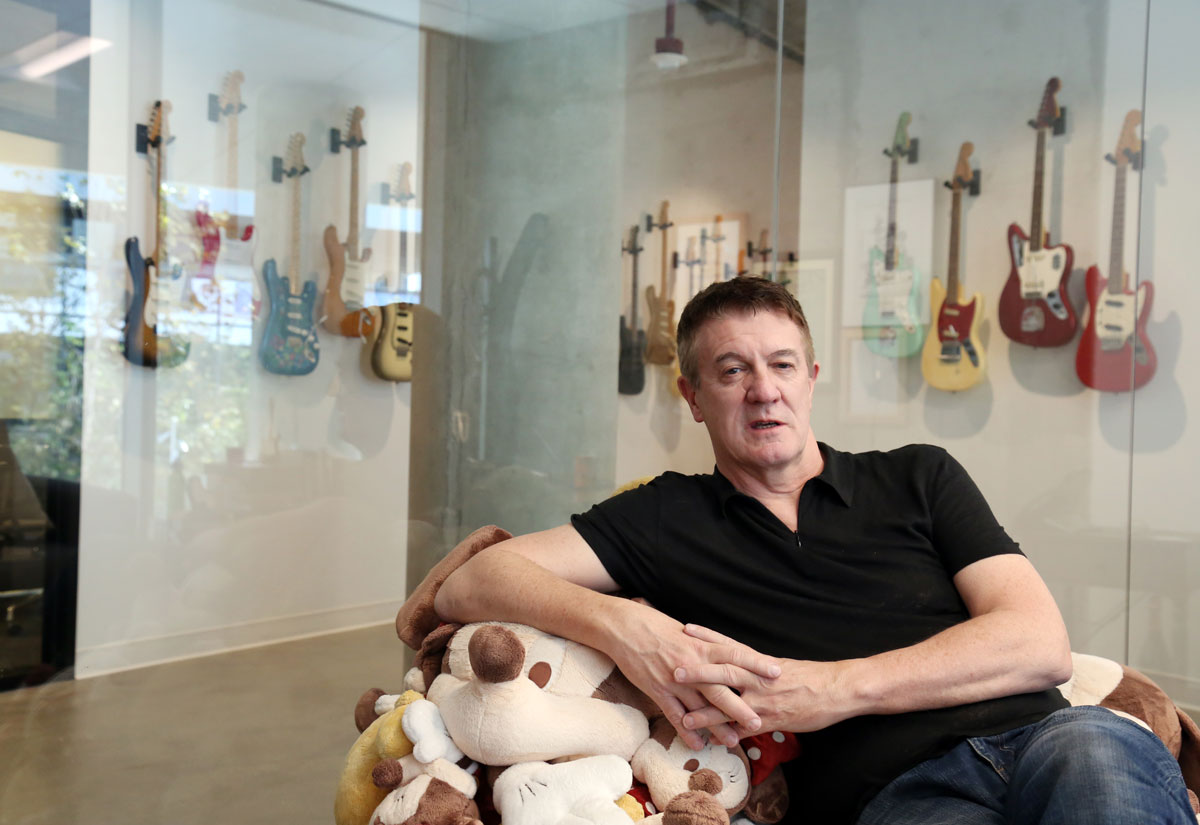
“When I joined Fender there was a lot of skepticism about it being a growth industry. I think we’ve demonstrated it can be. It just needs to be driven by product innovation and combining that with really compelling consumer marketing – not just trade marketing, which is still important but if consumers don’t know something is out there, they won’t get to the store or website.
“And then it’s about bringing new players into the market. The company was anxious to offer digital services when I joined but they didn’t know what product to offer and neither did I…
We changed our focus from established to also newer players. Both are important for this industry to grow
“I didn’t know enough about the industry to opine at the interview process about what we should do. It really was that research that helped us get there and learn things like new players were spending four times as much on lessons as they were on gear. And that the trend in lessons was towards online rather than in-person or a combination of both.
“We put steps in place to fuel that side of the industry. I think before that everyone in the industry was focused on stealing market share from each other, which is good for a company when they’re winning. To the dealer it doesn’t make a difference, they’re just moving money from Fender or somebody else and going back and forth.
“I wanted to grow the entire pie and excite the dealer base. If their business is more profitable, ours will be too. So we changed our focus from established – which the entire industry was singularly focused on – to also the newer players. Both are important for this industry to grow.”
For more information on the American Professional II series, head to Fender.com.
Amit has been writing for titles like Total Guitar, MusicRadar and Guitar World for over a decade and counts Richie Kotzen, Guthrie Govan and Jeff Beck among his primary influences as a guitar player. He's worked for magazines like Kerrang!, Metal Hammer, Classic Rock, Prog, Record Collector, Planet Rock, Rhythm and Bass Player, as well as newspapers like Metro and The Independent, interviewing everyone from Ozzy Osbourne and Lemmy to Slash and Jimmy Page, and once even traded solos with a member of Slayer on a track released internationally. As a session guitarist, he's played alongside members of Judas Priest and Uriah Heep in London ensemble Metalworks, as well as handled lead guitars for legends like Glen Matlock (Sex Pistols, The Faces) and Stu Hamm (Steve Vai, Joe Satriani, G3).













